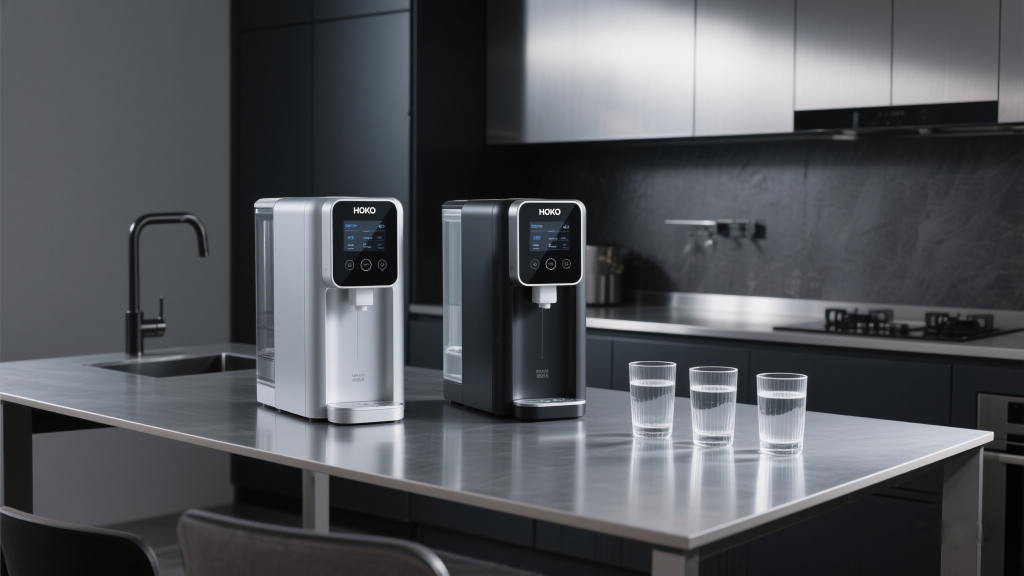Clean, safe water is essential for health, but choosing the right purification method can be challenging. Two technologies dominate modern water treatment: ultrafiltration (UF) and reverse osmosis (RO). While both remove contaminants, their approaches and outcomes differ significantly.
Choosing between reverse osmosis vs ultrafiltration can be confusing, especially when both systems claim to purify water effectively. This article breaks down how each works, their pros and cons, and helps you understand the real difference between ultrafiltration vs reverse osmosis.
What Is Ultrafiltration (UF)?
Ultrafiltration uses a semipermeable membrane with pores ranging from 0.01 to 0.1 microns—small enough to block bacteria, protozoa, sediment, and some viruses. Water passes through the membrane via gravity or low pressure, retaining beneficial minerals like calcium and magnesium.
Quick Facts: UF
| Aspect | Details |
|---|---|
| Pore Size | 0.01–0.1 microns |
| Removes | Bacteria, protozoa, sediment, some viruses |
| Doesn’t Remove | Dissolved salts, chemicals, heavy metals |
| Energy Use | Gravity/low pressure (no electricity) |
| Wastewater | None |
How It Works:
UF relies on physical filtration. Contaminants larger than the pore size are trapped, while dissolved minerals and smaller molecules flow through. It doesn’t require electricity in most setups, making it energy-efficient.
What It Removes:
- Bacteria (e.g., E. coli)
- Protozoa (e.g., Giardia)
- Sediment and rust particles
- Some viruses (depending on pore size)
Limitations:
- Doesn’t remove dissolved salts, heavy metals, or chemicals.
- Less effective against smaller viruses or pesticides.
What Is Reverse Osmosis (RO)?
Reverse osmosis employs a dense, semipermeable membrane with pores as small as 0.0001 microns. It removes up to 99% of contaminants, including dissolved ions, by applying high pressure to force water through the membrane.
Quick Facts: RO
| Aspect | Details |
|---|---|
| Pore Size | 0.0001 microns |
| Removes | Dissolved salts, heavy metals, viruses, pesticides |
| Doesn’t Remove | Beneficial minerals (requires remineralization) |
| Energy Use | Requires electricity for pumps |
| Wastewater | 3–4 liters wasted per liter purified |
How It Works:
RO systems use a multi-stage process:
- Sediment filter: Traps large particles.
- Carbon filter: Removes chlorine and organic chemicals.
- RO membrane: Eliminates dissolved solids.
- Carbon polisher: Improves taste.
What It Removes:
- Dissolved salts (e.g., sodium, fluoride)
- Heavy metals (e.g., lead, arsenic)
- Viruses and bacteria
- Pesticides and pharmaceuticals
Limitations:
- Removes beneficial minerals, producing demineralized water.
- Requires electricity for pumps and generates wastewater.

Key Differences Between UF and RO
When comparing ultrafiltration vs reverse osmosis, it’s important to focus on several key factors: what each system removes, their energy consumption, environmental impact, and overall maintenance. While both serve to improve water quality, their filtration capabilities and use cases are not interchangeable.
| Aspect | Ultrafiltration (UF) | Reverse Osmosis (RO) |
|---|---|---|
| Filtration Capability | Removes particles >0.01 microns | Removes particles >0.0001 microns |
| Mineral Retention | Preserves calcium, magnesium | Removes minerals; may need remineralization |
| Water Efficiency | No wastewater; faster flow | Wastes 3–4x water; slower output |
| Maintenance | Longer membrane life; lower cost | Frequent filter changes; higher long-term costs |
| Energy Use | Operates without electricity | Requires electric pumps |
Applications: When to Use UF vs. RO
Ultrafiltration Is Ideal For:
- Municipal water with low contamination risk.
- Households prioritizing mineral retention and energy efficiency.
- Emergency settings without electricity.
Reverse Osmosis Shines In:
- Regions with high TDS, heavy metals, or seawater intrusion.
- Labs, hospitals, or industries needing ultra-pure water.
- Homes requiring removal of dissolved toxins (e.g., pesticides).
Health and Environmental Considerations
| Factor | UF | RO |
|---|---|---|
| Health Impact | Retains minerals but may leave toxins. | Pure water lacks minerals; supplements may be needed. |
| Environmental Impact | Zero wastewater; energy-efficient. | High wastewater output; energy-intensive. |
Choosing the Right System
- Test Your Water: Check for TDS, bacteria, and chemical contaminants.
- Assess Needs: Prioritize mineral retention (UF) or thorough purification (RO).
- Consider Infrastructure: RO requires electricity and drainage; UF suits simpler setups.
Conclusion
Ultrafiltration and reverse osmosis serve distinct roles in water purification. UF offers a low-maintenance, eco-friendly solution for moderately clean water, while RO delivers unparalleled purity at the cost of higher energy and waste. Your choice depends on water quality, health priorities, and environmental impact.


